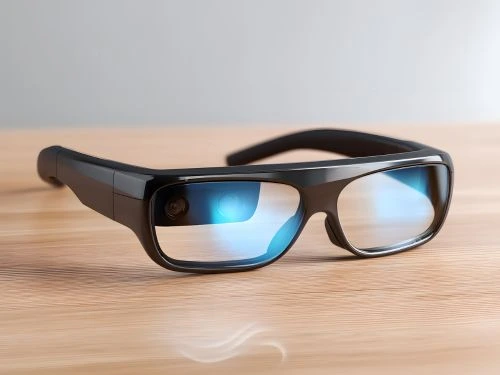Augmented reality and smart glasses reached a turning point in 2025. The market now spans full mixed reality headsets for immersive media, lightweight glasses for heads-up notifications, and hybrid devices that blend fashion with useful sensors. This guide covers the top 10 AR and smart glasses of 2025, explains what sets each model apart, recommends use cases, and offers buying advice grounded in recent reviews and industry reporting.
How These Picks Were Chosen
Priority was given to devices that deliver a clear combination of hardware quality, software polish, comfort, battery life, and practical features. Consideration also went to ecosystem support, developer tools, and real-world reviews in 2025. Some models emphasize immersive displays and spatial audio, while others focus on everyday wearability, camera capture, or enterprise workflows. Relevant hands-on reviews and vendor announcements informed the selections and shortlists.
Top 10 Best AR And Smart Glasses In 2025
1. Apple Vision Pro
The Apple Vision Pro remains the most advanced consumer mixed-reality headset discussed in 2025. The device sets a high bar for display quality, spatial audio, and system polish. Hands-on, long-term reviews praise the Vision Pro for immersive 3D content and excellent build quality, while noting that mainstream adoption depends on more native apps and broader content availability. The Vision Pro excels at high-fidelity media playback, spatial computing for productivity, and premium hardware design. For buyers who prioritize top display performance and seamless Apple ecosystem integration, the Vision Pro is the benchmark device.
Best For: Consumers seeking the highest quality mixed reality experience and heavy media or creative use.
Key Strengths: Superb OLED panels, spatial audio, polished UI.
Considerations: High price and content ecosystem still evolving.
2. Meta Ray-Ban Display
Meta and Ray-Ban introduced an AR display that aims to normalize heads-up information in a familiar Wayfarer frame. The Ray-Ban Display offers a discreet right-lens HUD for navigation, live captions, notifications, and basic AR overlays while preserving a conventional look. The product is notable for its integration with Meta services, AI voice control, and an accessory Neural Band for gesture control and biometric sensing. Early reporting highlights the device as a major step toward mainstream smart glasses because it blends fashion, battery life, and useful AR features at a more accessible price than premium mixed reality headsets.
Best For: Everyday users who want discreet AR features in a stylish frame.
Key Strengths: Familiar design, useful HUD features, extended battery with charging case.
Considerations: Limited full-scene AR and app selection at launch.
3. XReal Air 2 Pro (formerly Nreal)
XReal’s Air 2 Pro delivers an affordable way to get large virtual displays and cinematic media in a lightweight form factor. Reviews 2025 highlight sharp mini-OLED panels, excellent pixel density, and comfortable wear for extended viewing sessions. The Air 2 Pro is best used tethered to phones or PCs, creating a personal theater or multi-monitor workspace without the bulk of a full headset. The trade-off is limited advanced spatial computing versus high-end MR headsets, yet value and display quality place it high on recommended lists for media and productivity use.
Best For: Media consumption and portable multi-display productivity.
Key Strengths: High-pixel-density displays, lightweight, and great value.
Considerations: Dependent on the tethered device and fewer standalone AR apps.
4. Vuzix Blade 2
Vuzix continues to refine enterprise and prosumer smart glasses with the Blade 2. This model focuses on heads-up information, hands-free workflows, and on-device cameras that assist remote collaboration. Reviews and community feedback note solid ergonomics and enterprise software integrations, while battery life and app ecosystems remain the areas to watch. The Blade 2 is a dependable pick for field workers, logistics, and remote assistance scenarios where durability and a lightweight profile matter.
Best For: Enterprise use cases and remote collaboration.
Key Strengths: Professional integrations, robust fieldwork hardware.
Considerations: Limited consumer AR experiences and short battery spans in heavy use.
5. Lenovo ThinkReality A3
Lenovo’s ThinkReality A3 targets enterprise productivity and tethered AR for professional workflows. The glasses create virtual displays for laptops and desktops, enabling multi-monitor setups without physical screens. Reviews emphasize comfort, a reasonably compact form factor, and strong utility for design, engineering, and remote support. The ThinkReality platform continues to be valued by businesses that require reliable AR displays and secure software provisioning.
Best For: Professionals who need virtual monitors and enterprise software support.
Key Strengths: Comfortable fit, multi-display productivity, enterprise management.
Considerations: Not aimed at casual consumers or immersive content.
6. Rokid Air 2
Rokid’s Air 2 models are positioned as wearable projectors that combine compact design with surprisingly bright AR overlays. The brand emphasizes ergonomic fit and portability, with a focus on media playback and hands-free notifications. Rokid has built a reputation for making AR accessible and travel-friendly. The product is a good match for users who want occasional AR overlays without bulky headsets.
Best For: Travelers and casual users seeking portable visual augmentation.
Key Strengths: Lightweight design, portable display.
Considerations: The Software ecosystem is smaller than the major platform players.
7. Ray-Ban Meta Smart Glasses
The Ray-Ban Meta smart glasses line remains one of the most recognizable consumer wearables, blending camera capture, audio, and lightweight on-device features. Updated models improved camera quality, battery life, and social sharing workflows. Reviews emphasize low visual impact and strong audio, making the glasses attractive for creators and casual capture. Privacy conversations and the narrow use cases for long wear remain part of the public discourse.
Best For: Social-capture, casual wear, and lifestyle-tech buyers.
Key Strengths: Stylish frames, a good camera, and audio for short videos.
Considerations: Limited AR overlay capability and ongoing privacy concerns.
8. Snap Spectacles 4
Snap’s Spectacles continue to evolve with AR developer tools and social integration. The Spectacles 4 emphasize camera capture and mixed reality effects tailored to Snap’s Lens Studio and social ecosystem. The device appeals to content creators who want immersive overlays and direct publishing to social platforms. Recent reports point to improved optics and developer support that expand creative options for AR experiences.
Best For: Creators focused on social AR content and Lens Studio integration.
Key Strengths: Strong social pipeline, creative AR tools.
Considerations: Primarily a social and capture device rather than a productivity AR system.
9. Oakley Meta Vanguard
Oakley partnered with Meta to launch sporty smart glasses built for fitness. The Vanguard focuses on workout data, hands-free capture, and app integrations with fitness ecosystems. This design targets runners, cyclists, and athletes who need a durable, display-free device that records highlights, streams telemetry to apps, and captures action footage without bulky headgear. Early Meta announcements underscored the fitness focus and Garmin integration.
Best For: Active users and athletes who want wearable capture and fitness integration.
Key Strengths: Durable design, fitness data capture, app sync.
Considerations: Not intended for full AR overlays.
10. Emerging Developer Kits And Concept Glasses
The market in 2025 still includes a set of promising developer kits and niche headsets from startups and display specialists. These offerings are valuable to early adopters and developers who want to build bespoke spatial apps. Innovation in microdisplay tech, waveguides, and low-power architectures continues to accelerate, suggesting that next-generation smart glasses will become slimmer, brighter, and more app-rich. Keeping an eye on new developer previews is wise for buyers who want cutting-edge features as soon as they are ready for production.
Best For: Developers and early adopters tracking future AR capabilities.
Key Strengths: Rapid innovation and experimental features.
Considerations: Limited consumer polish and shorter support windows.

Comparison Table: Which Glasses Fit Which Use Case
- Best For Immersive Media: Apple Vision Pro.
- Best For Everyday AR in a Fashion Frame: Meta Ray-Ban Display.
- Best Value For Portable Displays: XReal Air 2 Pro.
- Best For Enterprise Workflows: Lenovo ThinkReality A3 and Vuzix Blade 2.
- Best For Fitness Capture: Oakley Meta Vanguard.
Buying Guide: What To Look For
Display Type and Brightness: The quality of the microdisplay and its brightness determine how well AR overlays remain visible in different lighting conditions. High brightness and contrast are essential for outdoor use.
Comfort and Weight: Daily wear demands lightweight frames, balanced weight distribution, and comfortable nose pads. A device that feels heavy will not be used often. Enterprise models tend to prioritize comfort for long shifts.
Battery Life and Charging: Battery life varies widely by use case. Media-heavy MR headsets draw more power than HUD-style glasses. Many consumer smart glasses now ship with charging cases that extend runtime.
Software and Ecosystem: A strong developer ecosystem, app support, and platform integrations make the device useful beyond a single demonstration. Devices tied to broad platforms, such as Apple and Meta, benefit from larger developer outreach and integrations.
Privacy and Social Comfort: Camera-equipped glasses still spark privacy concerns in public settings. Look for clear privacy indicators, removable cameras, and socially accepted usage patterns. Transparent communication about when recording is active helps reduce friction.
What To Expect Next For AR And Smart Glasses
The AR and smart glasses landscape in 2025 is broader and more compelling than in previous years. The range spans from premium mixed-reality systems that deliver stunning media experiences to discreet, stylish frames that add heads-up utility. Buying decisions depend heavily on the intended use case. For immersive media and spatial computing, premium headsets lead the field. For everyday wear, devices that prioritize design, battery life, and subtle AR features are the most practical choices. The next wave of products will focus on slimmer form factors, stronger AI capabilities, and richer developer ecosystems, making smart glasses an increasingly integral part of everyday tech.





